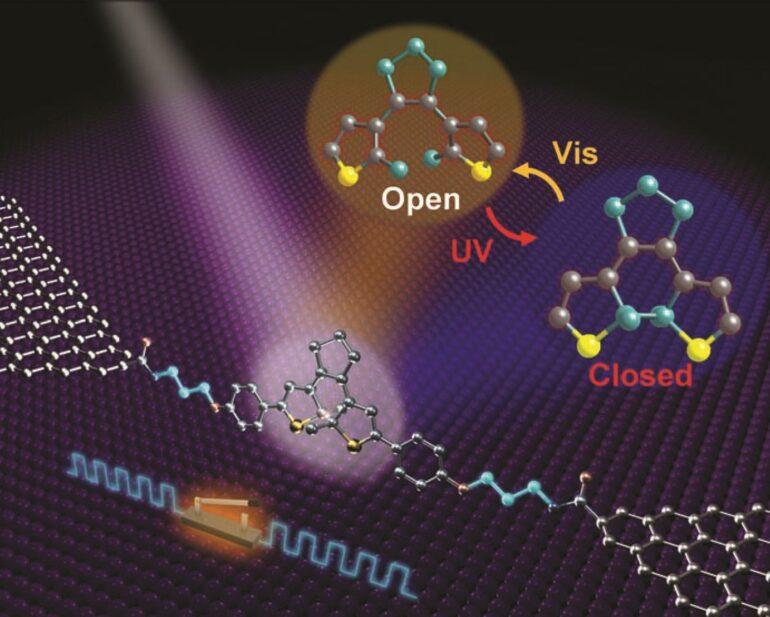Logic gates, the basic elements of the digital world, can now be built using one single molecule. An example is XOR, with two inputs. If at least one of them is “1,” then the output is “1,” as well; otherwise, it is 0. These logic gates measure less than 2 nanometers. They are based on single-electron transistors, capable of assembling and organizing themselves on a surface. Molecular logic not only reduces the on-chip dimensions and lowers energy consumption, they may also have similarities to the way the brain processes signals, says Prof. Christian Nijhuis, who published his results in Advanced Materials.
The molecules operate like all logic gates—AND, XOR, OR, NAND, NOR, INT and XNOR. These all are two-input, one-output circuits. The output signal will be 1 or 0 based on both inputs and the logic calculation. In today’s electronics, these gates are already small: On average, they’ll consist of three transistors. In the latest chip technology, a transistor is typically 5 nanometers. The latest models of smartphones have hundreds of millions logic gates on board. Single-electron transistors are not just smaller, their energy consumption is low. Both represent bottlenecks in further miniaturization. On the other hand, today’s chip manufacturing is a mature production process that can deal with extreme complexity.
The single electron logic calculators (SELCs) are built from molecules bridging the gap between two gold electrodes. The layer of material has a thickness of one single molecule. It functions thanks to a quantum effect called the Coulomb blockade. Depending on voltage, the electron will be halted or flow through the molecule. As the effect mainly depends on voltage pulses and not on a continuous electric current, the consumption is very low.
More information:
Ran Liu et al, Stable Universal 1‐ and 2‐Input Single‐Molecule Logic Gates, Advanced Materials (2022). DOI: 10.1002/adma.202202135
Provided by
University of Twente
Citation:
Logical switching using one single molecule (2022, June 15)
